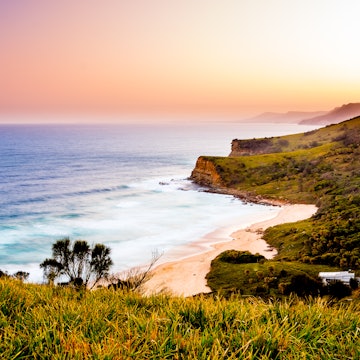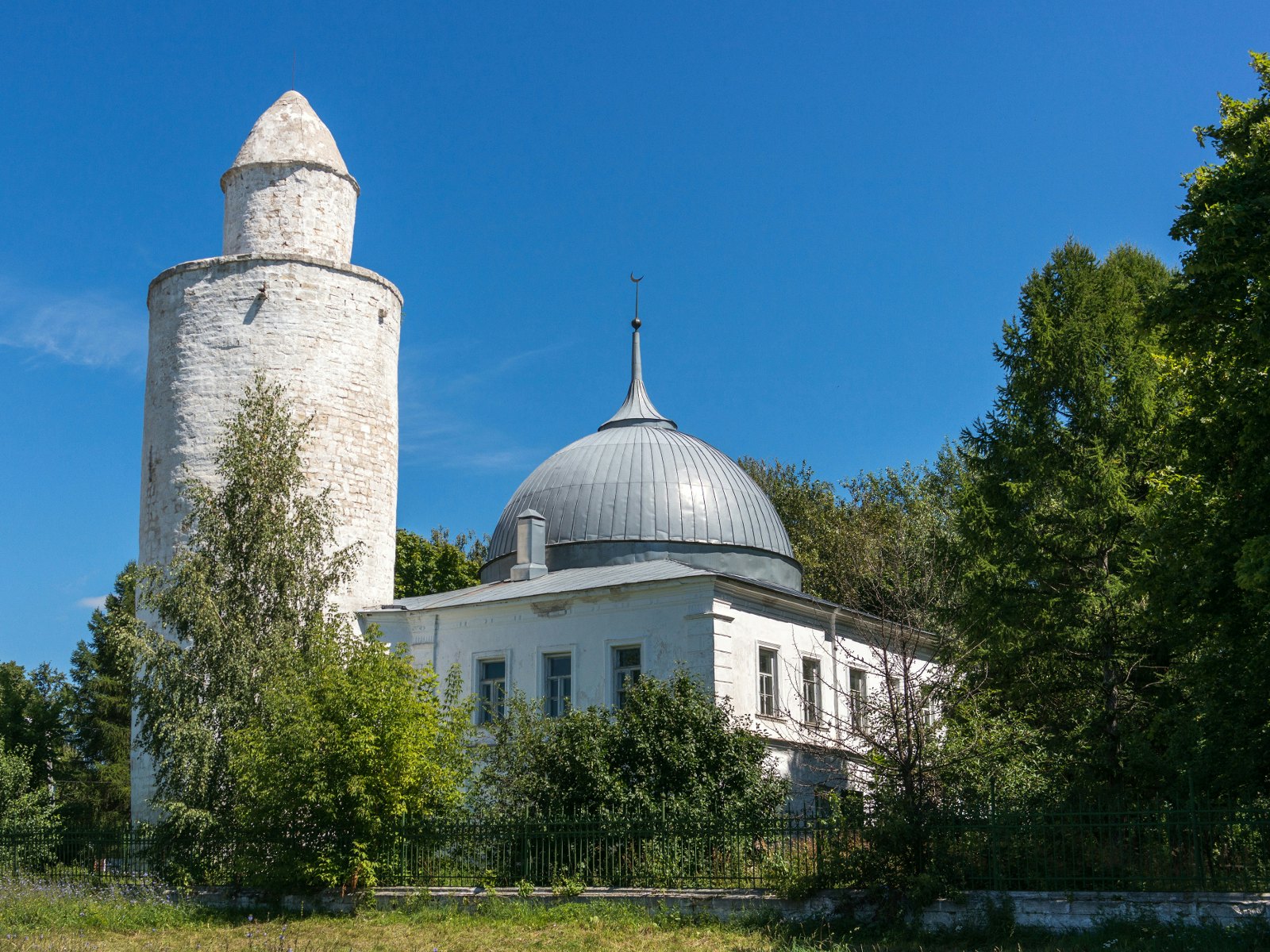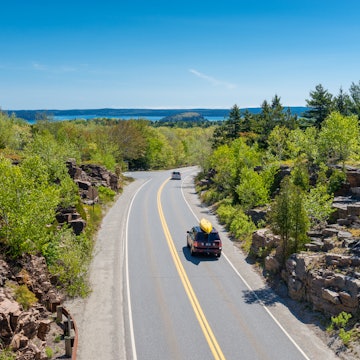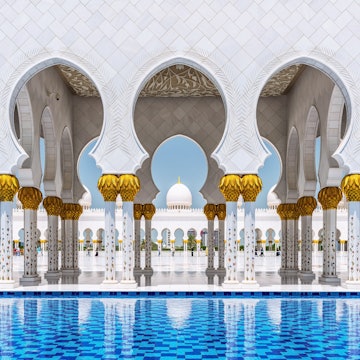

View of the Kolomna kremlin from the tourist riverboat © Natalia Volkova / Shutterstock
You might recall the names of great Russian rivers like the Volga or the Yenisey from geography lessons, but the Oka is unlikely to be one of them despite its easy-to-remember and affirmatively sounding name. Yet, as the main transport route of the ancient Muscovite princedom, it has more history and at least as much appeal for travellers as its more famous sisters.
With Oka cruises now resumed after a 20-year break, a chain of millennia-old historic towns along its banks are beginning to rival the Golden Ring as worthwhile destinations in the vicinity of Moscow.

The Oka river is one of two major tributaries of the Volga, and its basin borders on that of the Dnipro, which is why Kievan Slavs – led by their Viking princes – used it as the main route for colonising the lands that form the historic core of what we now know as Russia. Wooden Viking-style boats, the ladyas, were pulled by ropes across narrow and low-lying watersheds in the manner lately depicted in the Netflix series Vikings (the siege of Paris episodes).
Originating in southern Russia, the Oka flows north via the pretty town of Oryol before resolutely turning to the east near the industrial city of Kaluga. For the next few hundred kilometres, it skirts the border of the Moscow region – its wooded banks have long been favoured by the residents of the Russian capital as a place for weekend picnics and for building their summer cottages. The river passes the first cluster of dachas (country houses) and bohemian haunts near Serpukhov and Tarusa.

This upper section of the Oka is not covered by cruises – they originate in Moscow and follow the Moscow river down to its confluence with the Oka at Kolomna (120km east of Serpukhov and 113km south of Moscow), a little gem of a town and a popular day-trip destination for Muscovites. The main highlight is a section of the wall and the two towers that remain from the town’s kremlin (medieval fortress). Other remainders of the ramparts and towers are scattered around the courtyards of 18th-century merchants’ stone houses and traditional wooden cottages.
A couple of local museums stage shows celebrating major local crafts. One is dedicated to the production of large bread loafs, known as kalachi. Another is all about the Russian-style marshmallow, pastila. Both shows end with a tea party prominently featuring each of the products. But the quirkiest sight in Kolomna is Artkommunalka – a museum-cum-art-residence that meticulously re-creates the atmosphere of a 1960s communal flat, which housed millions of people during Soviet times. A variety of interactive tours and quests are on offer (all in Russian), but perhaps the best experience is to pre-order lunch in the communal kitchen and play kitchen dissidents for the duration of your stay.

Moving further upstream, most cruises call at Konstantinovo, the birthplace of Sergey Yesenin. The cherub-like bohemian playboy, born in a peasant family, grew to become Russia’s most celebrated decadent poet. He sealed his tragic pop-star fame by hanging himself in 1925 after a series of unsuccessful marriages, including the one with the American dancer Isadora Duncan. Even if you don’t speak Russian it’s worth coming here, if only to admire the beautiful scenery and get a glimpse of early 20th-century peasant life.
The next major stop is Ryazan (205km from Moscow), a city more ancient than the capital – something that’s admittedly not obvious at first sight, given Ryazan’s rather Soviet looks. Yet, it retains the original kremlin with a few elegant churches inside its medieval walls. Fans of biology and psychology might also be drawn to the little wooden cottage which contains the house-museum of academician Ivan Pavlov, of Pavlovian reflex fame. He received the Nobel Prize in 1904, though his tests conducted on dogs were quite obviously cruel even by the standards of his own time. They inspired Mikhail Bulgakov’s famous dystopia, A Dog’s Heart.
Kolomna, Konstantinovo and Ryazan are accessible from Moscow via E30 (Ryazan road). Trains for Kolomna and Ryazan depart from Moscow’s Kazan station (Kazansky vokzal).

After Ryazan, the Oka enters a territory so remote it’s only beginning to emerge on travellers’ radars. Upon entering the vast marshy area of Meshchera woods, the river passes Kasimov – a town with an intriguing history and well off the trodden path. In the 15th century, Moscow princes gave Kasimov to renegade Tatar princes whose descendants helped Ivan the Terrible to conquer Kazan in 1552. This is when the town became the place of exile for the Kazan princess Syuyumbike, even though in Kazan itself a whole myth has been built about a reclining tower from which she allegedly jumped to death to avoid being captured.
The Tatar influence becomes apparent as soon as you emerge into the main square, where the most prominent building is a late medieval mosque that now houses a nice regional museum. Together with a large dilapidated Russian cathedral, this whitewashed anthill-shaped windowless structure gives the town both an exotic and a desolate feel. Surprisingly for such a remote place, Kasimov boasts a very decent rustic hotel which comes with a quality restaurant. Occupying a large log house that faces a wide green field, Zhukova Gora features spacious rooms with large balconies and self-catering equipment.
Kasimov is 273km from Moscow, reachable via the one-lane R105 (Yegoryevsk road). Frequent buses from Moscow’s main bus station take five hours and 30 minutes to cover the distance.

The next stop is Murom, Russia’s third-oldest settlement (founded in AD 862) that bears the name of the now-extinct Finno-Ugric group subjugated by Kievan Viking princes and subsequently assimilated by the Slavs. Today, it displays a smattering of dilapidated old churches and merchants’ houses, which are worth wondering through for a few hours. There’s a nice regional museum and, with a bit of luck, another museum will be opened in the childhood home of Vladimir Zworykin, a Russian-born American inventor revered as the father of television.
Across the river and accessible via a newly constructed bridge, the town of Vyksa boasts a recently restored mansion-house of Batashev brothers, who built a metallurgy plant here in the 18th century. Its present-day owners sponsor the annual Art-Ovrag festival (held in June) – a remarkable contemporary art event that involves a parade of rafts (think floating carnival platforms) on the plant’s water reservoir.
Murom (313km from Moscow) can be accessed by direct train or bus from the Russian capital, or by bus from Vladimir. From Murom, cruises continue to Nizhny Novgorod – one of Russia’s most scenically located cities that stands at the confluence of the Oka and the Volga rivers. Some boats make a full circle travelling upstream along the Volga and returning via the Moscow–Volga canal; others continue downstream towards Kazan. Oka cruises are operated by companies such as Mosturflot and Vodokhod.













